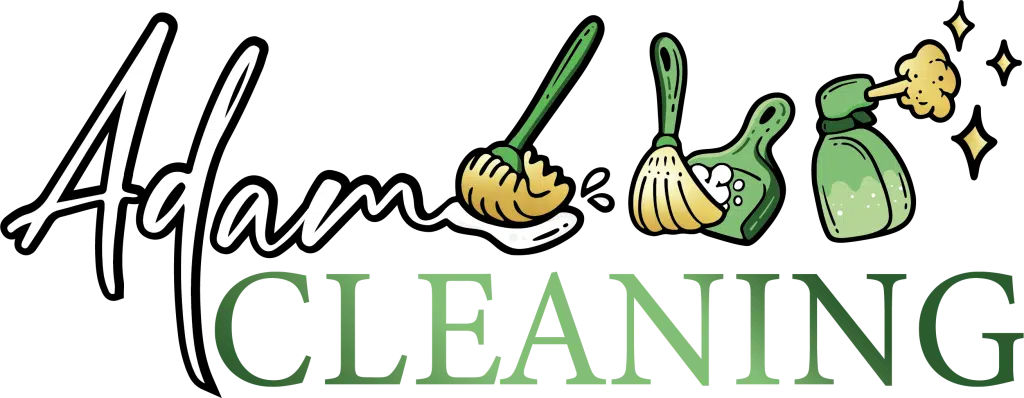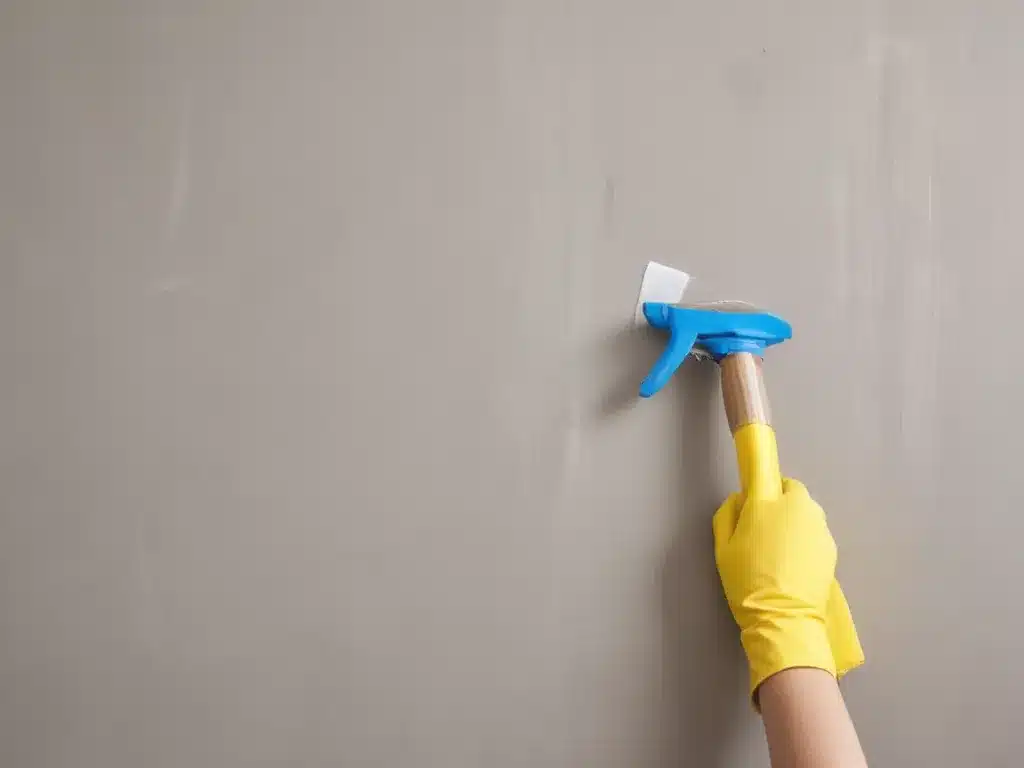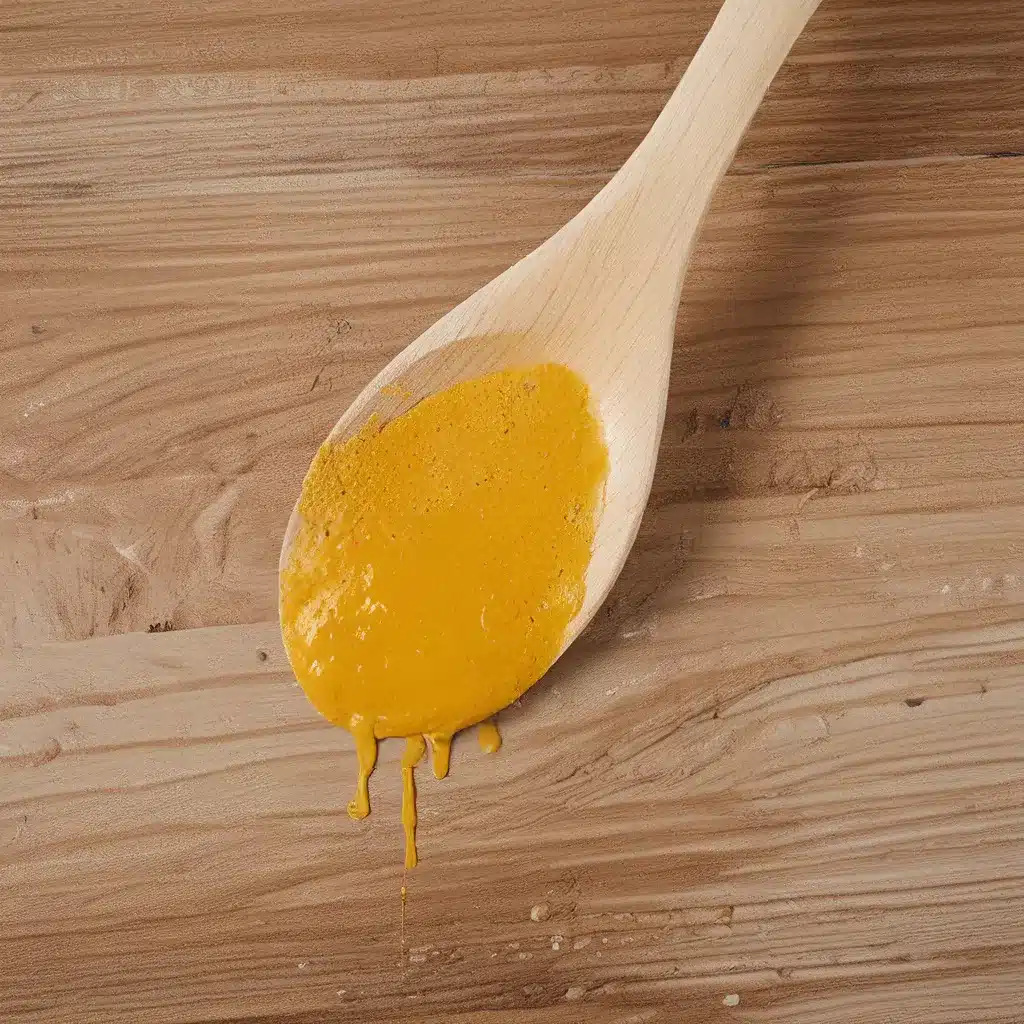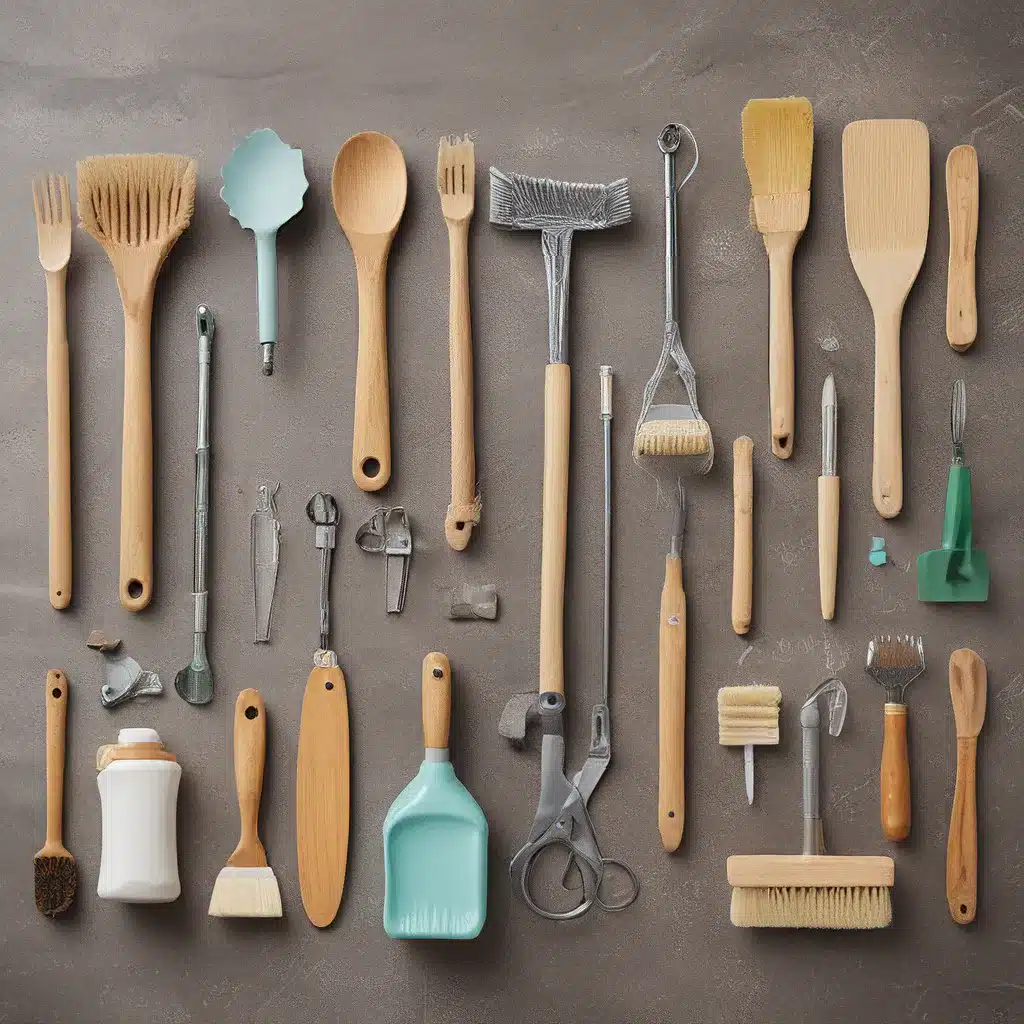Uncovering the Secrets to Sparkling Wall Surfaces
As a homeowner, I have always been passionate about maintaining a clean and well-kept living space. One area that often gets overlooked, however, is the walls – those expansive surfaces that frame our lives and deserve just as much attention as the floors or furniture. That’s why I’m excited to share my expertise on DIY wall cleaning solutions that can transform the look and feel of your home.
In this comprehensive guide, I will delve into the various types of wall surfaces, the common challenges they present, and the effective DIY cleaning methods you can employ to keep them looking their best. Whether you’re dealing with stubborn stains, faded paint, or a buildup of grime, I’ll provide you with the knowledge and tools to tackle these issues head-on.
Understanding Wall Surfaces and Their Unique Cleaning Needs
The walls in our homes come in a wide array of materials, each with its own unique cleaning requirements. From the smooth, sleek surfaces of drywall to the textured finishes of plaster, the cleaning approach must be tailored to the specific wall type.
Let’s start by exploring the common wall materials and the best practices for maintaining them:
Drywall
Drywall, also known as gypsum board, is one of the most prevalent wall materials in modern construction. Its smooth, uniform surface makes it relatively easy to clean, but it can be susceptible to scuffs, marks, and stains. To keep drywall walls looking their best, I recommend using a mild, non-abrasive cleaning solution and a soft cloth or sponge. Avoid using too much water, as it can damage the drywall material.
Plaster
Plaster walls, often found in older homes, feature a more textured surface that can be more challenging to clean. The porous nature of plaster means that it can easily absorb dirt and grime, making it essential to use the right cleaning techniques. I suggest using a gentle, pH-neutral cleaner and a soft-bristle brush to gently scrub the surface, taking care not to damage the delicate plaster.
Painted Walls
Painted walls are a common sight in modern homes, and they require special attention to maintain their vibrant appearance. The type of paint used (latex, oil-based, etc.) will dictate the best cleaning method. Generally, I recommend using a mild detergent or wall cleaner, and avoiding abrasive scrubbing that can damage the paint’s finish.
Wallpapered Walls
Wallpapered walls add a unique aesthetic to a space, but they can also be tricky to clean. The adhesive used to apply the wallpaper can make it susceptible to water damage, so it’s essential to use a damp, not wet, cloth when cleaning. Avoid using harsh chemicals or scrubbing too vigorously, as this can cause the wallpaper to peel or tear.
Exposed Brick
Exposed brick walls add a rustic, industrial charm to a space, but they can also be a magnet for dirt and grime. To clean exposed brick, I suggest using a stiff-bristle brush and a mild, pH-neutral cleaner. Avoid using too much water, as it can seep into the porous brick and cause damage.
By understanding the unique characteristics of these wall surfaces, we can develop tailored cleaning strategies that preserve their integrity and keep them looking their best.
Identifying and Tackling Common Wall Cleaning Challenges
Now that we’ve explored the different wall materials, let’s dive into the common challenges homeowners face when it comes to wall cleaning and the effective DIY solutions to address them.
Stubborn Stains and Marks
Whether it’s crayon scribbles from the kids, grease splatters from the kitchen, or mysterious smudges, stubborn stains can be a real headache to remove from walls. To tackle these tough marks, I recommend a two-step approach:
-
Pre-treat the Stain: Apply a small amount of a mild, non-toxic cleaner (such as diluted dish soap or a purpose-built wall cleaner) directly to the stain and let it sit for a few minutes to penetrate the surface.
-
Gently Scrub: Using a soft-bristle brush or a microfiber cloth, gently scrub the stained area in a circular motion. Avoid pressing too hard, as this can damage the wall surface.
For particularly stubborn stains, you may need to repeat this process a few times to fully remove the blemish. And remember, always test the cleaner on a small, inconspicuous area first to ensure it doesn’t damage the wall’s finish.
Faded or Discolored Paint
Over time, wall paint can start to fade or discolor, leaving your once-vibrant walls looking dull and lifeless. To revive the color and vibrancy of your painted walls, I suggest trying a DIY paint touch-up solution.
-
Carefully Match the Color: Identify the exact paint color used on your walls, either by checking the original paint cans or using a color-matching tool. This will ensure a seamless blend when you apply the touch-up paint.
-
Apply the Touch-up Paint: Using a small artist’s brush or a dabbing technique, carefully apply the matching paint to the faded or discolored areas. Blend the edges to create a smooth, seamless transition.
-
Seal and Protect: Once the touch-up paint has dried, apply a clear, matte sealer to the area to help protect the new paint and prevent future fading.
This simple DIY approach can breathe new life into your walls, saving you the time and expense of a full-room repaint.
Grime and Buildup
Over time, our walls can accumulate a layer of grime, dust, and other airborne particles, resulting in a dull, dingy appearance. To tackle this buildup, I recommend a thorough, deep-cleaning approach:
-
Prepare the Surface: Start by removing any loose dirt or debris with a microfiber cloth or a soft-bristle brush.
-
Mix a Cleaning Solution: Create a mild, all-purpose cleaning solution by mixing warm water and a few drops of a gentle, pH-neutral detergent or wall cleaner.
-
Scrub and Rinse: Using a clean sponge or cloth, gently scrub the wall surface in circular motions, applying the cleaning solution as you go. Rinse the area with a clean, damp cloth to remove any residue.
-
Dry Thoroughly: Ensure the wall is completely dry before moving on to any touch-up or painting tasks.
By taking the time to deep-clean your walls, you can restore their original luster and create a fresh, inviting atmosphere in your home.
Exploring Eco-Friendly and Natural Wall Cleaning Solutions
As homeowners become increasingly conscious of the environmental impact of their cleaning practices, the demand for eco-friendly and natural wall cleaning solutions has grown. Luckily, there are several effective DIY options that are gentle on both your walls and the planet.
Vinegar and Water Solution
One of the most versatile and cost-effective natural cleaning agents is white vinegar. By mixing equal parts vinegar and water, you can create a simple yet effective wall cleaner that cuts through grime and leaves a streak-free finish.
To use this solution, simply spray or wipe it onto the wall surface, let it sit for a few minutes, and then wipe clean with a damp cloth. The acetic acid in the vinegar helps to break down and lift away dirt and residue, while the water helps to dilute the vinegar and prevent damage to the wall material.
Baking Soda Paste
Baking soda is another household staple that can work wonders on dirty walls. By mixing a small amount of baking soda with water to create a gentle, abrasive paste, you can effectively scrub away stubborn stains and buildup without the need for harsh chemicals.
To use this DIY solution, apply the baking soda paste to the affected area with a soft-bristle brush or sponge, let it sit for a few minutes, and then gently scrub in a circular motion. Rinse the area with a damp cloth to remove any residue.
Essential Oil-Infused Cleaners
For an added touch of fragrance and antibacterial properties, you can enhance your DIY wall cleaning solutions with the addition of essential oils. Oils like lemon, tea tree, or lavender can not only help to disinfect and deodorize your walls but also leave behind a refreshing scent.
To incorporate essential oils into your cleaning mix, simply add a few drops to your vinegar-and-water or baking soda solution. The natural compounds in the oils can help to break down grime and leave your walls smelling clean and fresh.
By embracing these eco-friendly and natural cleaning methods, you can maintain the beauty and cleanliness of your walls while also reducing your environmental footprint. Plus, these DIY solutions are often more cost-effective than commercial wall cleaners, making them a practical choice for any budget-conscious homeowner.
Tackling Specific Wall Cleaning Challenges
While the general cleaning techniques we’ve discussed so far can be applied to a variety of wall surfaces, there are some specific challenges that may require a more targeted approach. Let’s explore a few of these scenarios and the best DIY solutions to address them.
Removing Grease and Oil Stains
Kitchens and bathrooms are particularly prone to grease and oil stains on the walls, thanks to cooking splatter and steam. To tackle these stubborn marks, I recommend a baking soda and dish soap solution.
-
Start by blotting the stain with a clean, dry cloth to remove any excess grease or oil.
-
Create a paste-like mixture by combining baking soda and a few drops of a mild dish soap (such as Dawn or Seventh Generation) with a small amount of water.
-
Using a soft-bristle brush or a sponge, gently scrub the paste into the stained area, working it into the wall’s surface.
-
Let the paste sit for 5-10 minutes to allow the baking soda and soap to break down the grease.
-
Rinse the area thoroughly with a clean, damp cloth, being careful not to soak the wall.
-
Repeat the process if necessary until the stain is fully removed.
This simple DIY solution harnesses the degreasing power of baking soda and dish soap to effectively lift and remove even the toughest grease and oil stains from your walls.
Addressing Water Damage and Mold
In areas prone to moisture, such as bathrooms and laundry rooms, water damage and mold growth can become a frustrating problem. To tackle these issues, you’ll need to take a multi-step approach:
-
Identify and address the source of the moisture to prevent further damage. This may involve fixing leaks, improving ventilation, or addressing any underlying structural issues.
-
Use a mold-killing solution, such as a diluted bleach-and-water mixture, to thoroughly clean and disinfect the affected area. Be sure to wear protective gear, such as gloves and a mask, when working with bleach.
-
Once the area is clean and dry, apply a mold-resistant primer or sealant to the wall surface to help prevent future growth.
-
Finally, repaint the wall with a mold-resistant paint formula to complete the restoration.
By taking a proactive approach to addressing water damage and mold, you can not only restore the aesthetic appeal of your walls but also protect the long-term health and structural integrity of your home.
Reviving Textured Walls
Textured wall surfaces, such as those found in older homes or created with specialized finishes, can present unique cleaning challenges. To revive the look and feel of these walls, I suggest the following steps:
-
Lightly dust the wall surface with a soft-bristle brush or a microfiber cloth to remove any loose dirt or debris.
-
Mix a gentle, pH-neutral cleaner with warm water, and use a sponge or a soft-bristle brush to gently scrub the wall in small, circular motions.
-
Rinse the area with a clean, damp cloth, taking care not to over-saturate the textured surface.
-
For stubborn stains or buildup, you may need to use a soft-bristle toothbrush or a small, stiff-bristle brush to lightly scrub the affected areas.
-
Once the wall is clean and dry, consider applying a clear, matte sealant to help protect the textured finish and make future cleaning easier.
By using a delicate touch and the right cleaning tools, you can restore the unique character and appeal of your textured walls without compromising the integrity of the surface.
Maintaining a Clean and Fresh Wall Environment
Keeping your walls clean and well-maintained is an ongoing process, but the effort is well worth it. Not only does a clean wall surface enhance the overall aesthetic of your home, but it can also contribute to a healthier indoor environment.
Establishing a Regular Cleaning Routine
To maintain the cleanliness and longevity of your walls, I recommend incorporating a regular wall-cleaning routine into your home maintenance schedule. This could involve a monthly or quarterly deep-clean, supplemented by spot-cleaning as needed.
By making wall cleaning a consistent part of your cleaning regimen, you can stay ahead of buildup, stains, and other issues, ultimately saving you time and effort in the long run.
Preventing Future Damage and Discoloration
In addition to regular cleaning, there are several proactive steps you can take to prevent future damage and discoloration to your walls:
-
Use Protective Coverings: Consider installing chair rails, wainscoting, or other protective coverings in high-traffic areas to shield your walls from scuffs, scrapes, and stains.
-
Apply Wall Sealants: Applying a clear, matte wall sealant can help create a protective barrier against grime, moisture, and fading, making future cleaning easier.
-
Maintain Proper Humidity Levels: Controlling the humidity levels in your home, particularly in moisture-prone areas like bathrooms, can help prevent the growth of mold and mildew on your walls.
-
Touch Up Paint Regularly: Addressing minor paint chips, cracks, or discoloration with timely touch-ups can help maintain the overall appearance of your walls and prevent more extensive damage over time.
By implementing these preventative measures, you can extend the lifespan of your wall surfaces and keep your home looking its absolute best.
Conclusion: Elevating Your Walls to New Heights
In conclusion, taking a fresh look at your walls and embracing DIY cleaning solutions can have a transformative effect on the overall aesthetics and well-being of your home. By understanding the unique characteristics of different wall materials, identifying and tackling common cleaning challenges, and exploring eco-friendly cleaning methods, you can maintain the beauty and integrity of your walls for years to come.
Remember, a clean and well-maintained wall surface not only enhances the visual appeal of your living space but can also contribute to a healthier indoor environment. So, embrace the power of DIY wall cleaning and enjoy the satisfaction of a sparkling, refreshed home.
If you’re looking for professional cleaning services to complement your DIY efforts, I encourage you to visit our website to learn more about our comprehensive cleaning solutions. Together, we can transform the walls of your home into a true reflection of your personal style and cleanliness standards.
Happy cleaning, and enjoy your freshly revived walls!







